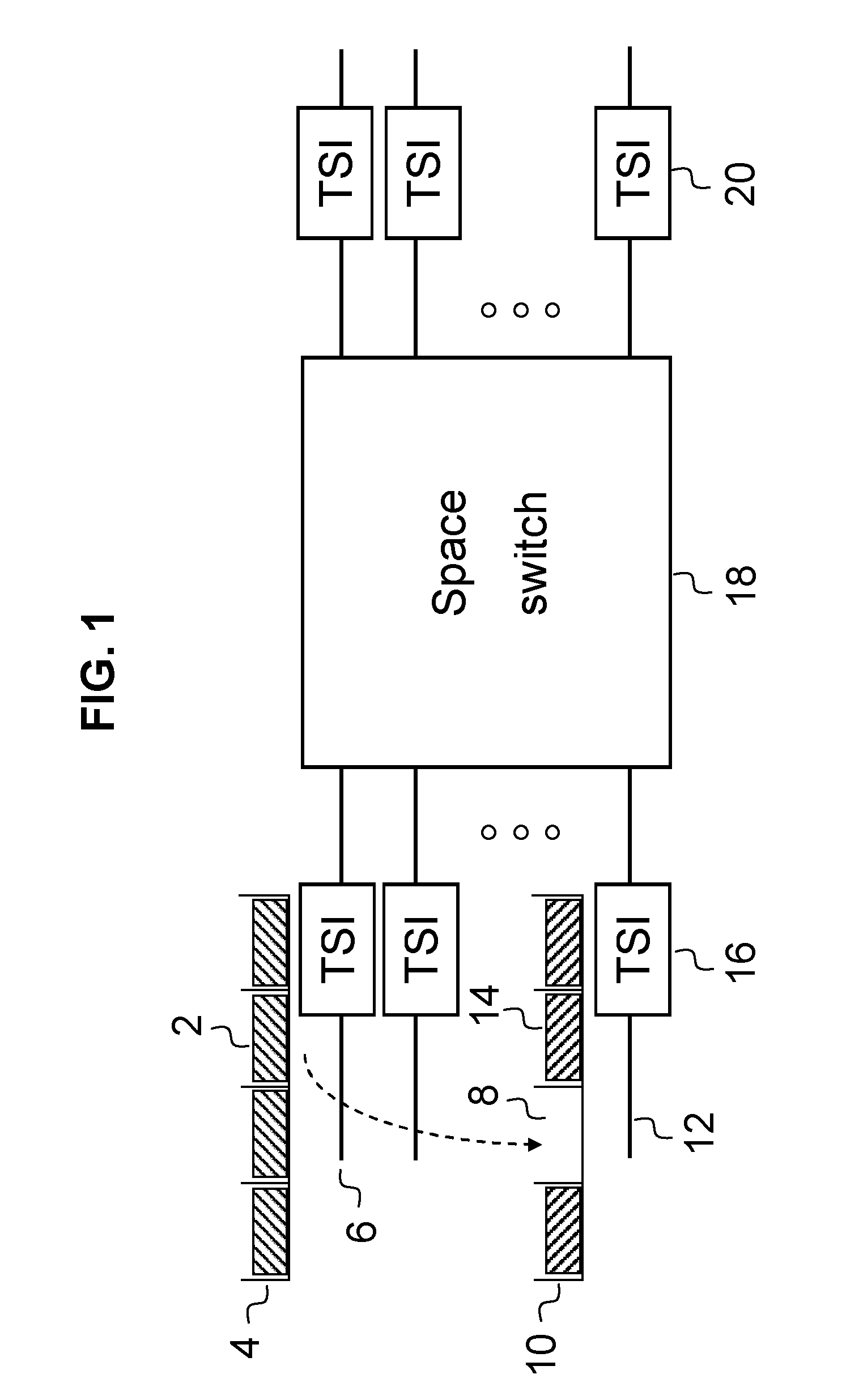Time multiplexed space switch
a space switch and time division technology, applied in the field of time division multiplexing of data channels, can solve the problems of conventionally considered problematic, delaying channel tributaries, and difficult implementation of time switching in the optical domain, and achieves the effects of reducing the number of optical gates, facilitating tributary switching, and high quality pulses
- Summary
- Abstract
- Description
- Claims
- Application Information
AI Technical Summary
Benefits of technology
Problems solved by technology
Method used
Image
Examples
Embodiment Construction
In FIG. 2, a laser source 22 of ultra-short pulse radiation (SC) produces a sequence of pulses of rate equal to the data tributary rate (say, 40 GHz), and is spectrally sliced, using a wavelength de-multiplexer 24, to produce a number of synchronous pulse sequences 25 (in this case, four) each at different wavelength. Subsequently, each pulse is split into a number of pulses of same wavelength using a power splitter 26. A space switch 28 selects a number of thus produced pulses and blocks and discards the pulses which are not needed. Each of the selected pulses is connected by the switch to a delay line 30 of appropriate time delay. In this example the four delay paths differ in delay by one bit period of the higher rate TDM data channel (160 Gb / s). A coupler 32 combines the delayed pulses. In this way, a multi-wavelength pulse sequence 36 is created of 160 GHz rate (4 times 40 GHz), which can be altered by re-configuring the space switch 28. Therefore, the system 34 is a pulsed las...
PUM
 Login to View More
Login to View More Abstract
Description
Claims
Application Information
 Login to View More
Login to View More - R&D
- Intellectual Property
- Life Sciences
- Materials
- Tech Scout
- Unparalleled Data Quality
- Higher Quality Content
- 60% Fewer Hallucinations
Browse by: Latest US Patents, China's latest patents, Technical Efficacy Thesaurus, Application Domain, Technology Topic, Popular Technical Reports.
© 2025 PatSnap. All rights reserved.Legal|Privacy policy|Modern Slavery Act Transparency Statement|Sitemap|About US| Contact US: help@patsnap.com



